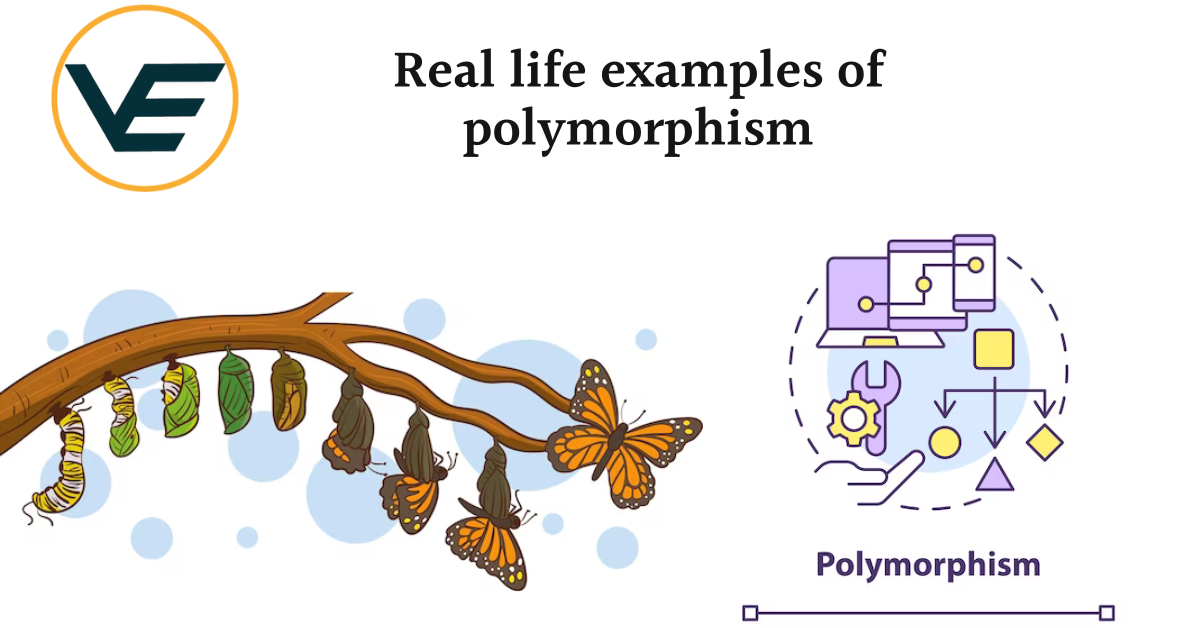Polymorphism is a fundamental concept in object-oriented programming that allows objects of different classes to be treated as objects of a common superclass. It enables flexibility and extensibility in software design.

10 Examples of polymorphism
Here are 10 real-life examples of polymorphism:
- Shape Hierarchy: In a graphics application, different shapes like circles, squares, and triangles can be treated as instances of a common “Shape” superclass, enabling consistent operations like area calculation and rendering.
- Animal Class: In a zoo management system, animals of various species can be represented as objects of an “Animal” class, allowing shared functionality for feeding and medical care.
- File Handling: In programming, the same “write” method can be used to write data to different types of files, such as text files, binary files, or CSV files, due to polymorphism.
- Calculator Application: In a calculator app, the “+” operator can be overloaded to perform addition for various data types like integers, floating-point numbers, and complex numbers.
- Sorting Algorithms: Polymorphism allows the use of a single sorting algorithm to sort different types of data, such as numbers, strings, or custom objects.
- Music Player: In a music player, the “play” method can be polymorphic, allowing it to play different audio formats like MP3, WAV, or AAC.
- Notification System: A notification system can send notifications through various channels like email, SMS, or push notifications, all using a common interface for polymorphism.
- Payment Gateway: Different payment methods like credit cards, PayPal, and Google Pay can be treated as different implementations of a common “Payment” interface.
- User Interface Components: In a graphical user interface (GUI) library, various UI components like buttons, checkboxes, and dropdowns can share common functionality through polymorphism.
- Vehicle Types: In a transportation system, different types of vehicles like cars, bikes, and buses can be managed using a common “Vehicle” class, enabling consistent operations.
These examples demonstrate how polymorphism promotes code reusability, simplifies code maintenance, and enhances the flexibility and scalability of software systems.

